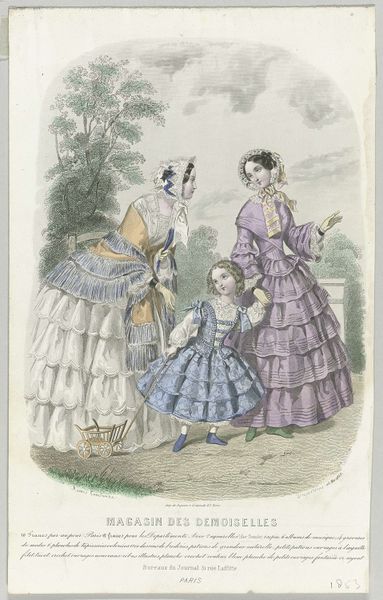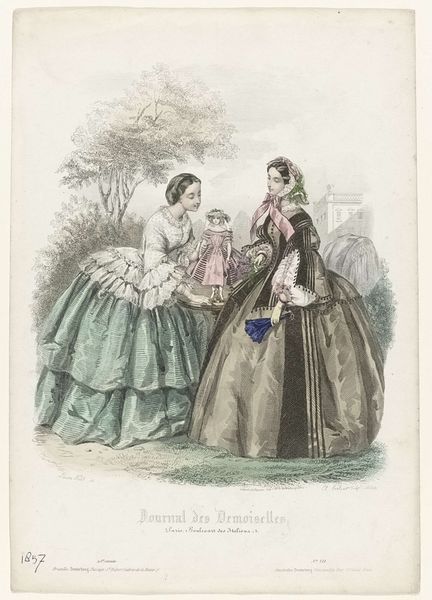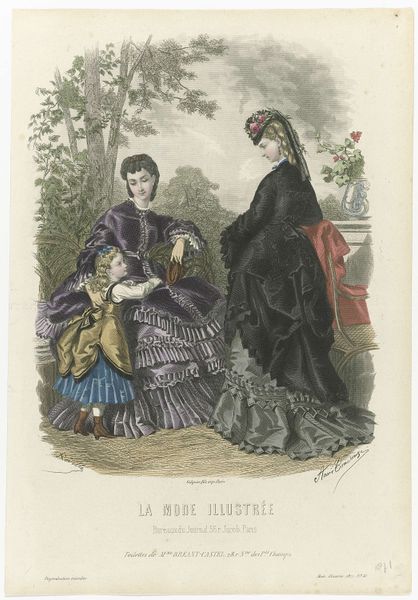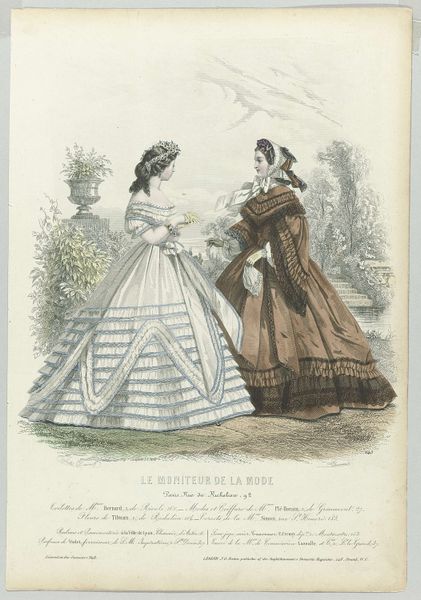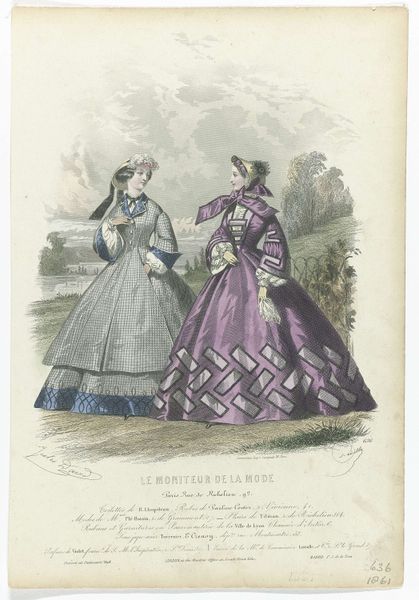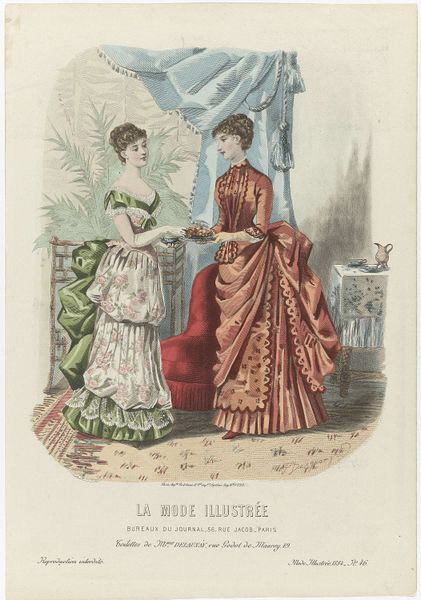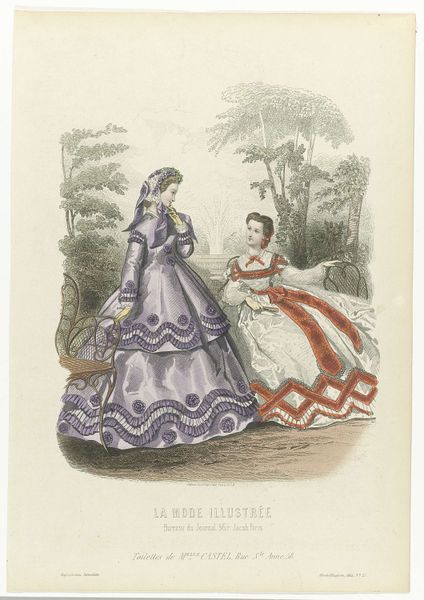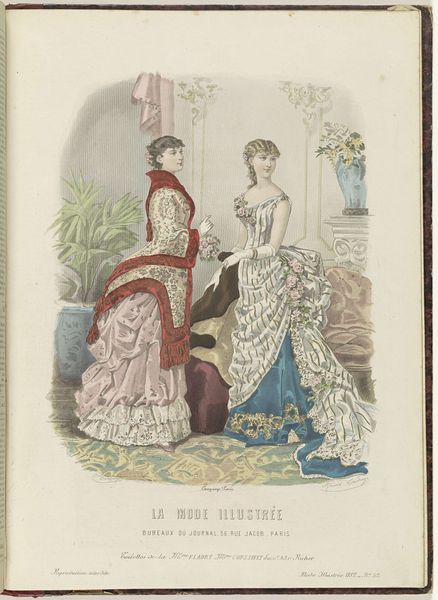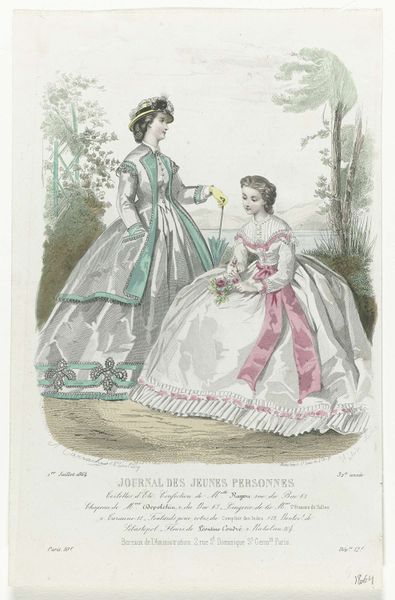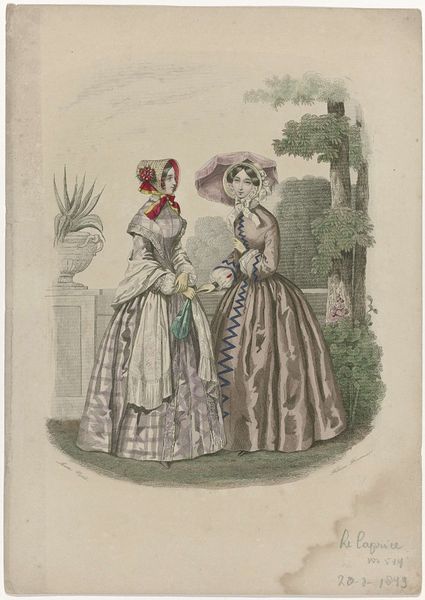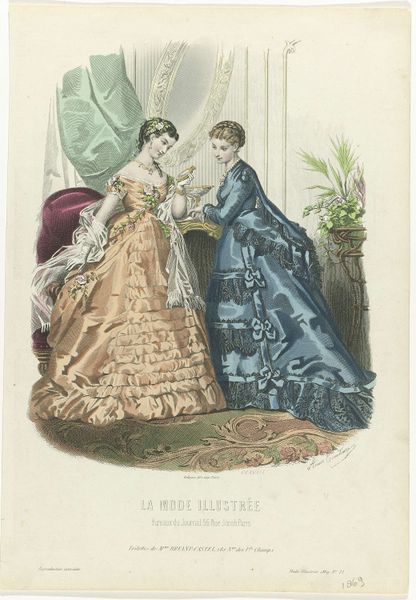
Dimensions: height 272 mm, width 180 mm
Copyright: Rijks Museum: Open Domain
Paul Lacourière made this fashion plate for the Journal das Familias in July 1870. It’s a lithograph, which means it was printed from a flat stone using the chemical repulsion of oil and water. Look closely, and you’ll see the subtle textures made by the lithographic crayon. The three figures are wearing the height of fashion: elaborately layered and trimmed dresses. These would have been made from fabrics like silk or cotton, which were products of global trade and industrial manufacturing. Think of all the labor involved: growing the cotton, weaving the fabric, dyeing it, and then all the skilled needlework required for the construction of the dresses themselves. Fashion plates like this one were not just about aesthetics, but about commerce. They fueled the desire for new goods and perpetuated the cycle of production and consumption. By focusing on the making of things – like these dresses – we can understand how deeply intertwined art, craft, and industry really are.
Comments
No comments
Be the first to comment and join the conversation on the ultimate creative platform.

